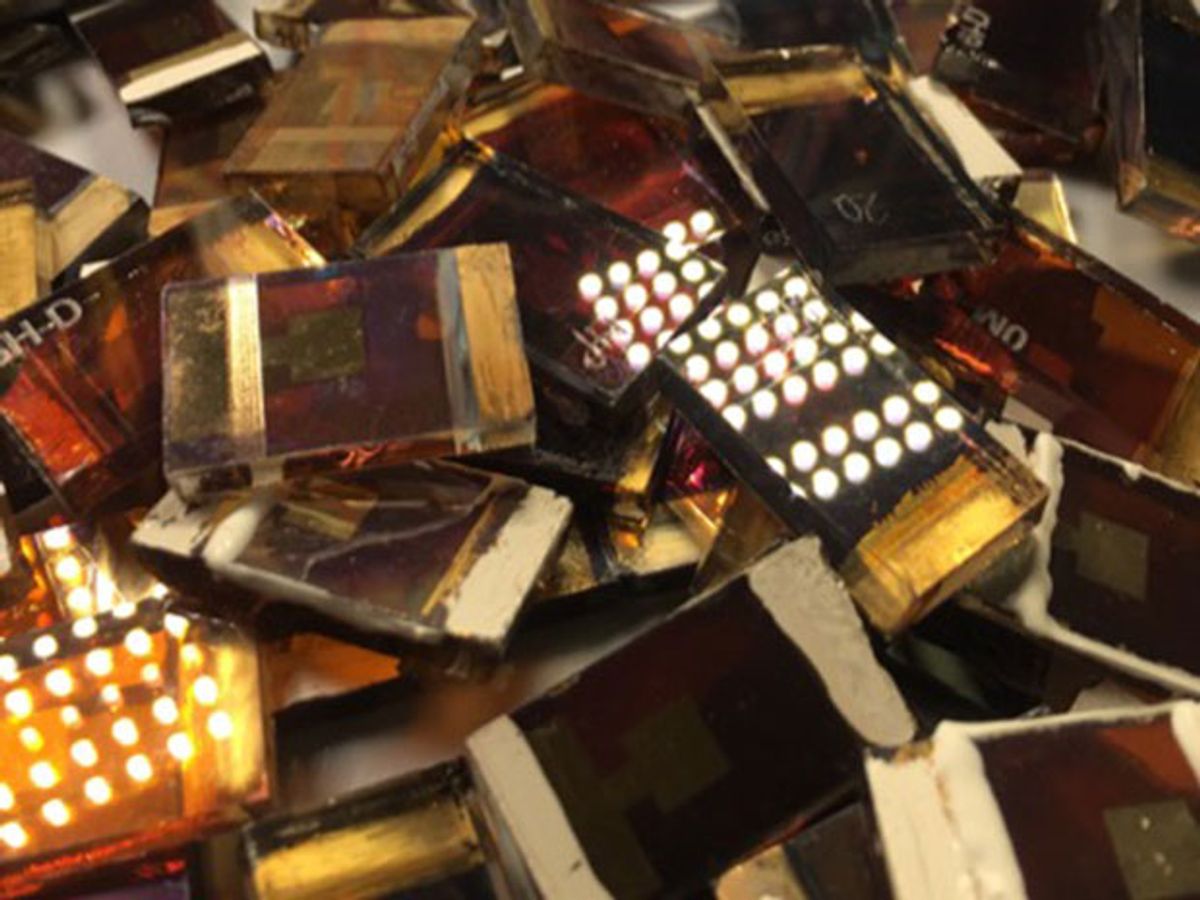Solar cells based on perovskite crystals have made unparalleled advances in performance in the past decade, but most research on these devices has neglected the question of how stable they might be outdoors for long periods of time. Now two research groups have come up with different ways to improve perovskite solar cell stability, findings detailed in two papers in the journal Science.
One approach added rubidium cations to perovskite. "We believe this may help to relax lattice strain, resulting in a more defect-free overall crystal," says Michael Saliba, lead author of that study and a solar cell researcher at the Swiss Federal Institute of Technology in Lausanne.
The resulting devices reached conversion efficiencies of up to 21.6 percent. In addition, "[W]e measure some of the highest open-circuit voltages for any recorded solar cell material, meaning that we are very close [to] the thermodynamical limit," Saliba says. The open-circuit voltage is the maximum voltage available from a solar cell.
In addition, these devices also maintained 95 percent of their performance even at 85 degrees C and full illumination after 500 hours. "Up until now, perovskite solar cells were rather an academic subject, since the stability was never compatible with industrial testing," Saliba says. "There is very little data at elevated temperature."
The other approach developed a fluorinated polymer coating "that can readily solve two of the most severe degradation pathways that affect the long-term performance of perovskite solar cells — namely, ultraviolet light-induced degradation and moisture-induced degradation," says Gianmarco Griffini, co-lead author of that study and a materials engineer at Milan Polytechnic in Italy.
Griffini and his colleagues experimented with organometal halide perovskite solar cells, which have demonstrated high conversion efficiency but do not tolerate ultraviolet light or water. They created the coating on the devices using a light-based curing technique that only required a few seconds and can be carried out at room temperature.
The water-repellant coating protects the solar cells from water and luminescent pigments inside the coating convert ultraviolet light to visible light to simultaneously prevent degradation and enhance performance. All in all, the cells demonstrated conversion efficiencies that reached nearly 19 percent under standard illumination.
Most previous studies reported stability tests lasting only hours or days, "which are most of the times carried out in a controlled environment — typically an inert atmosphere, such as nitrogen or argon," Griffini says. In contrast, Griffini and his team found that coated devices retained nearly their full performance even after more than six months of humidity and ultraviolet irradiation tests in the lab, as well as three months of outdoor tests under a variety of temperatures and weather conditions.
"We demonstrated that one single coating material can in fact stabilize perovskite solar cells in continuous outdoor operations," Griffini says. "Our work represents a clear milestone."
Correction: Gianmarco Griffini's affiliation is Milan Polytechnic and not Turin Polytechnic as originally published.
Charles Q. Choi is a science reporter who contributes regularly to IEEE Spectrum. He has written for Scientific American, The New York Times, Wired, and Science, among others.



